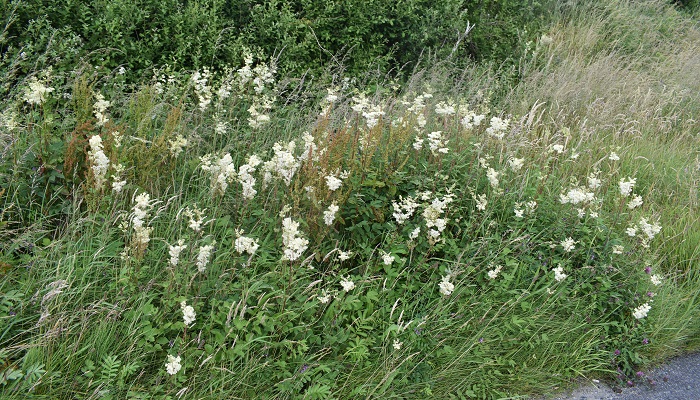24 July 2022
Growing wild – dog rose and meadowsweet

Catherine Keena, Teagasc Countryside Management Specialist takes a closer look at some of our native Irish biodiversity to look out for in the countryside. Here she shares some interesting facts of nature about dog rose and meadowsweet
Dog rose

Look out for dog rose with its beautiful, fragrant white to deep pink flowers and contrasting cluster of golden stamens in the centre, on green arching branches bearing curved thorns. Individual flowers open for only a few days, producing pollen but not nectar, closing at night and during rain. A coloured gall develops around cynipid gall-wasp eggs, laid in leaf buds. Leaf-cutter bees cut circular holes out of the leaves for their nests. Dog rose roots were supposed to cure the bite of a mad dog. This wild rose of summer, an ancient symbol of love and beauty is part of our native Irish biodiversity.
Meadowsweet

Look out for meadowsweet with cream coloured sprays of tiny five to six petalled flowers, clustered on long reddish stems, growing in damp areas. The darker green leaves have pale undersides with distinctive small leafy bits between each pair of leaflets. The leaves have a medicinal heavy almond-like medicinal aroma whereas the flowers have a strong sweet smell. Bees are attracted to the scent of the flowers and transfer pollen even though the flowers don’t produce nectar. Meadowsweet contains salicylic acid, used as a disinfectant, painkiller and anti-inflammatory. Another distinctive plant in the countryside, meadowsweet is part of our native Irish biodiversity.
See previous Growing Wild articles below:
- Growing Wild – dandelion and greater stitchwort
- Growing Wild – willow, primrose and lady’s smock
- Growing Wild – whitethorn and cow parsley
- Growing Wild – bluebells and guelder rose
- Growing wild – Honeysuckle and Foxglove
- Growing Wild – Elder and Ragged Robin
Keep an eye on Teagasc Daily for another Growing Wild next month. Learn more from Teagasc about Biodiversity & Countryside
